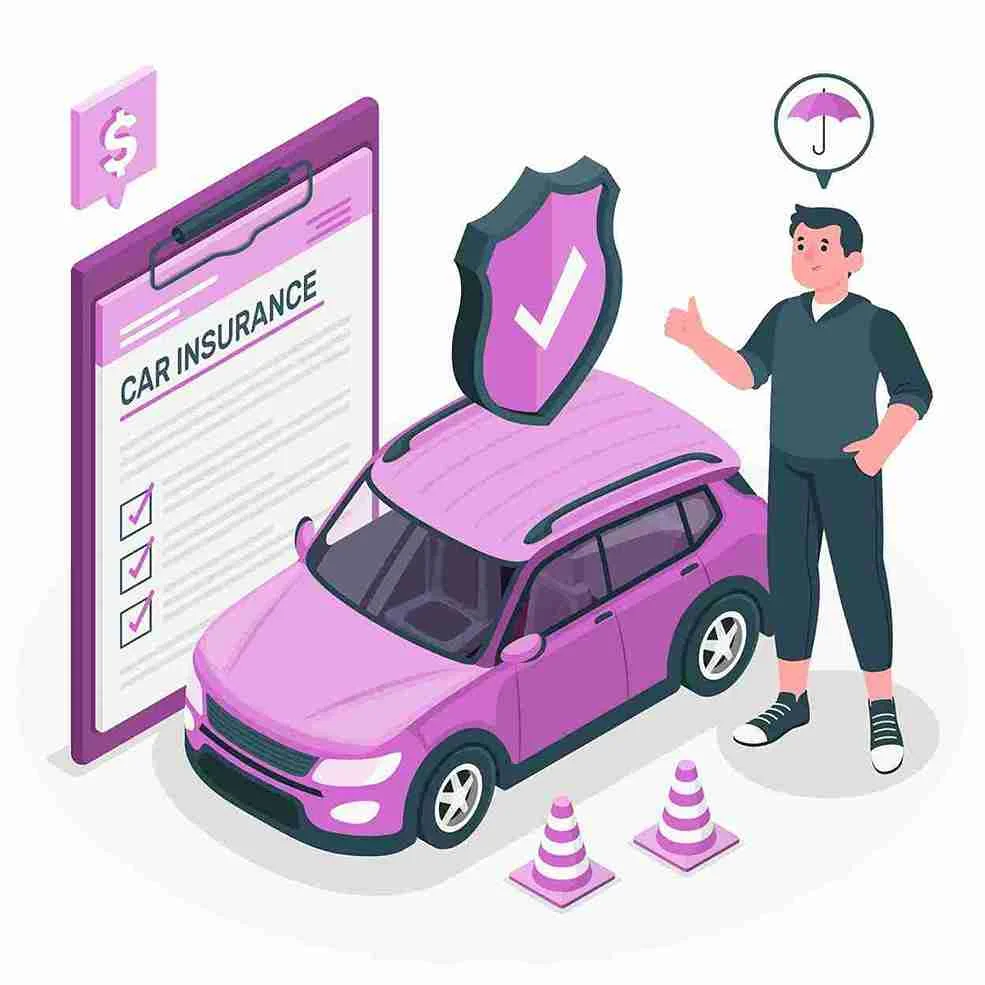The last decade has seen some significant changes in the car insurance industry, which are mainly attributable to technological advancements. One of them is telematics, a technique that assists insurers in gathering real-time driving data which helps in determining the risks associated and customizing premiums according to an individual’s driving habits. Despite the fact that telematics-based insurance coverage, also referred to as usage-based insurance (UBI), is aimed at favorable premium rates for drivers with no road mishaps, quite a number are still asking: does it live up to its claims?
This blog discusses telematics in detail – what are the working exploring how it works, its potential to reduce premiums and more importantly – is it a revolutionary approach for the vehicle insurance sector.
What Is Telematics?
Telematics is the technology that collects and transmits information about a vehicle’s movement and driving habits via an onboard device or a mobile app. These devices use GPS and other sensors to track metrics such as:
- Speed
- Mileage
- Acceleration and braking patterns
- Time of day the vehicle is being driven
- Cornering and turns
- Location and routes taken
This data is transmitted to the insurance provider, who then assesses the driver’s behavior to calculate a more personalized premium. Safe and cautious drivers stand to benefit from reduced rates, while those with more aggressive or risky driving behaviors may not see the same savings.
The Promise of Lower Premiums
The principle of telematics-based insurance is simple: the safer you drive, the lower the premium. Historically, car insurance companies have taken such parameters as age, sex, brand and type of car, and location in determining policy prices. Although these elements help insurers evaluate risk, they don’t reflect how individual drivers operate their vehicles.
In the case of telematics, for instance, insurance companies are able to look at people’s driving habits and patterns, such as how fast and where they drive. This makes possible some degree of differentiation in pricing and may benefit those who drive within speed limits, do not engage in sudden braking, and do not drive around late at night.
In theory, that means safe drivers could reap very good discounts. A study conducted by the Insurance Research Council (IRC) found that users of UBI programs are usually able to reduce their premiums from 10% to 30%, with the most careful drivers saving even more.
How Telematics Works in Practice
- Installation of the Telematics Device or App: When you sign up for a telematics-based policy, your insurer will either provide you with a telematics device to install in your car or ask you to download a mobile app that tracks your driving behavior. Some vehicles also come with built-in telematics systems.
- Data Collection: As you drive, the telematics system collects various data points, including speed, distance traveled, braking patterns, and the times you’re on the road. The insurer uses this data to create a driving profile for you.
- Scoring and Feedback: Some insurers provide feedback on your driving through apps or online dashboards. This feedback may include tips on how to improve your driving habits, which could lead to lower premiums over time. In many cases, insurers give drivers a driving score based on their performance.
- Adjustment of Premiums: After collecting data over a period of time, the insurer may adjust your premiums. If the data shows you’re a responsible driver, you could see a reduction in your insurance costs. However, if the data indicates risky driving behavior, your premiums may stay the same or even increase.

Does Telematics Really Lower Premiums?
The short answer: it depends. Telematics can decrease premiums for a good number of drivers, but the amount saved will differ from each person based on factors pertaining to their individual circumstances as well as driving behavior. Let’s look at some of the contributing factors that affect the possibility of the premium reductions being offered.
-
Driving Behavior
Telematics measures driving behavior against the set standards of driving and thus discounts the risks that are associated with the particular driver telematics measures and records all dangerous driving activities including speeding, rapid or quite acceleration, hard braking and also takes note of time of the day and the average speed being used. For careful drivers who maintain a steady pace and avoid risky maneuvers, telematics can be used as a way of saving quite a lot.
But for motorists who are frequent long-distance drivers, regular late-night drivers, or have erratic driving behavior patterns may not expect to reap such benefits .In some instances when telematics records dangerous driving actions risky drivers may expect no discounts at all or even higher premiums over time.
-
How Much You Drive
As a rule of thumb, most telematics programs are pay-as-you-drive. A telematics system can be worth a lot if one does not drive a lot or only drives short distances since they are out on the road less and hence are a lesser risk. According to the Snapshot program by Progressive, it is typically those who drive lesser miles who benefit the most cuts in their rates.
It is someone, who has a long trek to work on a daily basis or happens to be very frequently behind a wheel, the chances of being involved in an accident get raised and so the reduction in the premiums may not be that pronounced.
-
Telematics Policy Terms
There is a inequity in the modeling of telematics policies: some people do not get the same benefits as others. For some insurance providers, some individuals are able to get discounts that are more favorable, while for others the saving may be just for a token in the overall scheme. For instance, some insurance providers might put a lid on potential savings at the rate of thirty percent, while others would be more flexible but with a more rigid criteria of how one drives a car.
As much as one may trust an insurance provider, the policy which is telematics based should be read with particular focus on the clauses that outline the arithmetic of what type of driving is acceptable and will attract premium discount, and the premiums to be paid.
-
Transparency and Control
Telematics helps to enhance the control and transparency of its users. This is in contrast to conventional insurance policies, which typically resemble a “set and forget” style as telematics gives drivers power to decide how much their insurance will cost based on how well (or poorly) they drive.
Often, the real-time feedback is given by insurers through mobile applications. If you are a driver, this might be helpful in changing your behavior to ensure you save more. If for instance the app of your insurance provider says that you are braking harshly too often, with time you know you should work on your driving behavior to avoid paying excessive premiums.
Potential Drawbacks of Telematics
While telematics has clear advantages, there are some potential drawbacks to consider:
- Privacy Concerns: Since telematics devices track your location, driving habits, and sometimes even the routes you take, some drivers feel uncomfortable sharing that level of personal information with their insurer. Privacy concerns are one of the most common reasons people opt out of telematics programs.
- Higher Premiums for Risky Drivers: While telematics offers discounts for safe driving, it can penalize drivers who exhibit risky behaviors. If you’re someone who occasionally speeds, brakes harshly, or drives late at night, you could end up with higher premiums.
- Limited Savings for Certain Drivers: Not everyone will see significant savings with telematics. If you already have a low-risk driving profile based on traditional factors (age, gender, vehicle type), the potential for additional savings may be minimal.
Who Should Consider Telematics?
Telematics-based car insurance is ideal for certain groups of drivers, including:
- Safe, Cautious Drivers: If you’re a careful driver who avoids speeding and erratic behavior, telematics could help you secure a lower premium.
- Low-Mileage Drivers: If you don’t drive often or mostly use your vehicle for short trips, telematics programs based on mileage can result in substantial savings.
- Young or Inexperienced Drivers: Younger drivers, who are often charged higher premiums due to their lack of driving history, can use telematics to prove they’re safe drivers and potentially reduce their insurance costs.
- Drivers Looking for More Control: If you want more control over your insurance premiums and are willing to adjust your driving habits to secure discounts, telematics may be a good fit.
Conclusion
There is no denying that telematics has transformed the car insurance sector as it provides an alternative means of risk evaluation that may result in lower costs for secure drivers. The savings, however, depend on various factors such as individual driving, the number of miles driven, and the insurance policy coverage you have.
For prudent drivers who don’t mind giving out their data, telematics can be useful in lowering insurance premiums. But for others who have privacy issues or do riskier driving, the benefits may not be the same. In the end, telematics is not for everyone but for most, it provides option to control premiums and lower insurance rates.

